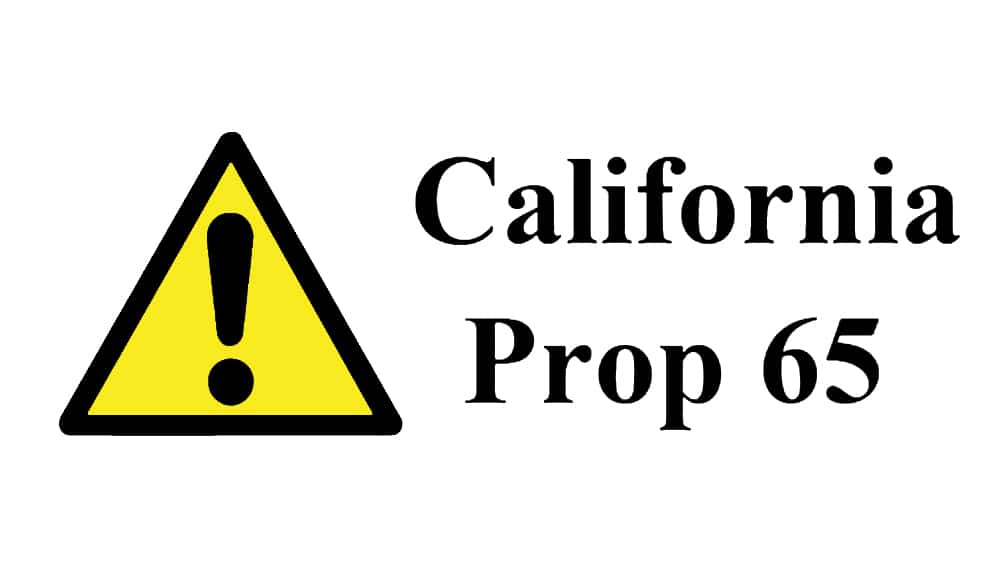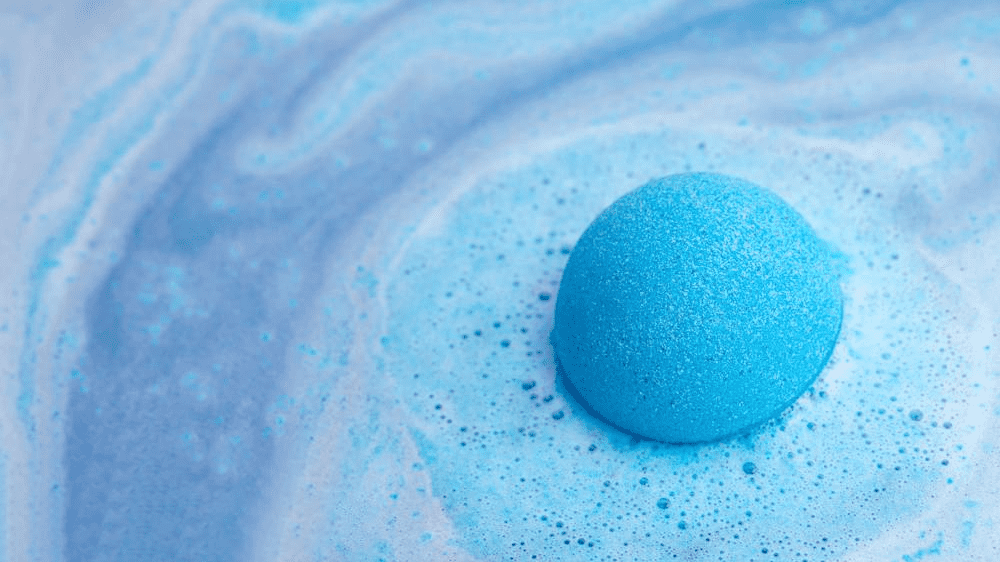In the cosmetics industry, Prop 65 is a very important regulation, especially when your product is sold in California, USA. The regulation applies to most products, especially for cosmetics, since it covering not only the chemical ingredients but also the packaging materials.
What is Prop 65?
Proposition 65, also known as the Safe Drinking Water and Toxic Enforcement Act, was passed by California voters in 1986. The regulation prohibits:
- Excessive use of toxic chemicals in consumer goods without warning
- Discharge the listed substances into drinking water sources
The California Office of Environmental Health Hazard Assessment (OEHHA), which manages Prop 65, regularly (usually once a year) updates the list of chemicals that may cause the following health issues to humans:
- cancer
- Developmental issues
- Reproductive diseases
Currently, approximately 1000 chemical substances have been added to the list, and the list may continue to grow in the future, you can visit the official website to find all the substances, Proposition 65 List.
Which cosmetic substances are covered by Prop 65?
Heavy metals
The heavy metals detected in cosmetics mainly include lead, arsenic, mercury, chromium, etc., which can cause varying degrees of damage to different organs of the human body. For example, Lead can damage the kidneys and nervous system of the human body.
| Chemical | CAS | Toxicity | Substances |
| Lead | 7439-92-1 | cancer | metal container, colorant |
| Arsenic | 7440-38-2 | cancer | metal container, colorant |
| Mercury | 7439-97-6 | cancer | metal container, colorant |
| Chromium | 7440-47-3 | cancer | metal container, colorant |
Cosmetics may contain heavy metals due to the following reasons, they can be objective, or subjective:
- For whitening: For example, mercury can inhibit the formation of melanin through the interaction with body cells, so as to achieve whitening. Similarly, lead can also have a whitening effect, but it belongs to physical properties such as alkaline lead carbonate, which is white and can cover defects.
- For sun protection: The raw material of zinc oxide, zinc ore, contains the heavy metal cadmium and zinc oxide has the effect of alleviating acute and subacute dermatitis, so it is often added as a physical sunscreen ingredient in skincare products.
- For anti-wrinkles: For example, arsenic can cause subcutaneous capillaries to swell and prop up wrinkles on the surface of the skin, which appears to achieve smooth skin.
- For coloring: All colored additives are mineral or petroleum-based, which exist on the Earth and inevitably contain heavy metals. For example, red color pigments generally contain lead tetroxide, and lead has good adhesion, reducing the time required for pigments to dry, and making them more durable and moisture-resistant.
- Not strictly controlled in production: for example, arsenic is widely present in nature, so it is easy to contain arsenic pollution in raw materials. If there is no strict control during the production process, it will lead to arsenic exceeding the standard.
As can be seen from the above, the heavy metal content of makeup is higher than that of personal care. The risk of heavy metals in personal care mainly lies in pigments and packaging materials.
Formaldehyde
Formaldehyde is a broad-spectrum preservative, and its main hazard in cosmetics is contact dermatitis.
Cosmetics contain formaldehyde mainly from preservatives, which we call formaldehyde-releasing agents. Under certain conditions, they can decompose or degrade to produce formaldehyde.
The release pathway of trace formaldehyde released by formaldehyde release agents is different from that of directly added formaldehyde in products, and it is considered safe to use it within the specified range, in recent years, almost no one use this type as a preservative.
The most use formaldehyde-releasing agents preservatives as below:
| Preservative | CAS |
| DMDM hydantoin | 6440-58-0 |
| Quaternium-15 | 4080-31-3 |
| Diazolidinyl urea | 78491-02-8 |
| Imidazolidinyl urea | 39236-46-9 |
| Sodium hydroxymethyl glycinate | 70161-44-3 |
| Phenylmethoxymethanol | 14548-60-8 |
Fragrance chemicals
It is undeniable that fragrance chemistry constitutes the vast majority of chemicals associated with adverse chronic health effects in beauty and personal care products, The main reason is that most of them come from petroleum. Moreover, due to the complexity of the ingredients and the protection of commercial secrets, the disclosure information on the ingredients of fragrances is not perfect and complete.
The following are common fragrance ingredients that on the Porp 65 list:
| Chemical | CAS | Toxicity |
| Styrene | 100-42-5 | cancer |
| Acetaldehyde | 75-07-0 | cancer |
| Benzene | 71-43-2 | cancer |
| Methylene chloride | 75-09-2 | cancer |
| Methyleugenol | 93-15-2 | cancer |
| beta-Myrcene | 123-35-3 | cancer |
| Estragole | 140-67-0 | cancer |
| Pulegone | 89-82-7 | cancer |
| Pyridine | 110-86-1 | cancer |
Warning label of Prop 65
Prop 65 has established a warning label system to inform consumers that products contain or may contain carcinogens or toxins that damage the human reproductive system.
Warning label requirements
Importers and manufacturers must stick warning labels in the following situations:
- (Possible) Products containing listed chemical substances greater than safe levels.
- Products containing chemicals listed in Prop 65 that do not specify a safe level.
Prop 65 proposes that this process should be completed through scientific, rigorous, and quantitative evaluation. In fact, the only way to evaluate whether your product meets the warning requirements is the testing.
Label format and content
The requirements for warning labels (including format and content) are explained in the following legal provisions: Title 27, Article 6 of the California Code of Regulations.
The triangle warning symbol should be placed to the left of the word ‘warning’. You can download warning symbols on the OEHHA website. Please note that you can choose the color (black and white or black and yellow) and size of the symbol. “Warning” should be written in bold capital letters.
- For products with listed carcinogen content exceeding the limit, the warning statement shall be in the following format: “This product may expose you to chemicals including [name of one or more chemical substances], which California already knows can cause cancer.”
- For products containing listed substances that may cause reproductive harm, a warning statement should be written in this form: “This product may expose you to chemicals including [name of one or more chemical substances], which California is already aware of causing congenital defects or other reproductive harm.”
- If the product contains both listed carcinogens and reproductive toxins, the following two risks shall be included in the warning: “… causing cancer and congenital defects or other reproductive harm.”
It’s worth noting that Proposition 65 warning labels are not equivalent to a regulatory decision to deem a product “safe” or “unsafe.” For cosmetics, this is to make consumers aware of the use of these chemicals.
How can cosmetics comply with Prop 65?
It can be said that California 65 is the most stringent regulation in the United States, although it is only applicable to the California area. Since it is very representative, if your product can meet its requirements, then it has great competitiveness, no matter where it is Sold.
To comply with Prop 65, you can take the following steps:
- Identify and evaluate the chemicals: check your ingredient to see whether any of them are on the Prop 65 list.
- Check out all packaging and accessories: to see if it contains or exceeds the standard of heavy metals and phthalate, MSDS is the key information.
- Submit to third-party testing: If you are not sure whether the product is qualified, the best way is to submit it to an authoritative third party for testing. Most of the labs will test for lead, cadmium, and phthalate 6P, which have the highest risk of being.
- Provide warnings: If a chemical on the Prop 65 list is present in your product, and above a certain level, you have to provide a warning on the label.
- Reformulate: You can also reformulate the product to remove or reduce the level of chemicals that require a Prop 65 warning.



